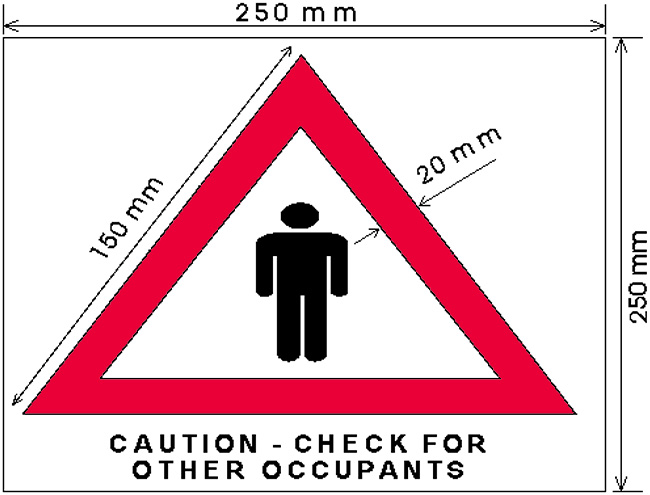Download the PDF consolidation of Part 137 [PDF 422 KB]
Instruments and equipment required by Subpart F must meet the following specifications and requirements:
Seats and shoulder harnesses must be designed using an ultimate forward and resulting inertia force of 12g.
(a) A hopper or spray tank and its support structure that is situated in such a position that it could injure an occupant if it came loose in a minor crash landing must be designed using an ultimate forward and resulting inertia force of 12g.
(b) A hopper or spray tank and its support structure that is situated in front of the crew must be designed using ultimate inertia forces of—
(1) 1.5g rearwards; and
(2) 1.0g sideways.
(c) For the purposes of paragraph (a) and (b), the hopper or spray tank must be assumed to be filled to the maximum load specified in the aircraft flight manual.
Hoppers must be provided with a means for the pilot to detect the upper level of the contents, by indication or observation, for all loads in excess of half the maximum hopper load specified in the aircraft flight manual, allowing for the likely range of agricultural material densities to be carried.
(a) A jettison system must be—
(1) simple to operate; and
(2) designed so that once the control is selected by the pilot the load will fully discharge without requiring the pilot to continue holding the control.
(b) The capability of the jettison system must be—
(1) demonstrated by a flight test using—
(i) the maximum permitted load of Superphosphate specified in the flight manual; and
(ii) when specialised role equipment is fitted, the maximum permitted load of the agricultural material typically used when that role equipment is fitted; and
(2) specified in the aeroplane flight manual.
(a) Markings and placards must be displayed in a conspicuous place that may not be easily erased, disfigured, obscured, or removed.
(b) Units used on markings and placards must be the same as those on the related instrument or in the related aircraft flight manual.
A placard stating the maximum hopper or spray tank load must—
(1) be located—
(i) adjacent to the hopper or tank filler; and
(ii) in full view of the normal loading positions; and
(2) state a maximum load not exceeding the permitted maximum hopper load.
Agricultural aeroplanes equipped with a jettison system in accordance with rule 137.259(3) must have a placard with the following wording displayed in the cockpit and in view of the pilot:
CAUTION
The jettison capability of this aeroplane may differ depending on the aeroplane configuration and the type and condition of the material to be dispensed.
For each passenger position not readily visible from the outside of an aircraft, the exterior must be marked on both sides of the fuselage adjacent to the passenger position with the following diagram:

A black figure within a red triangle on a white background.
(a) A placard or placards with the following wording must be displayed in the cockpit of an agricultural aeroplane and in view of the pilot:
WARNING
Operation of this aeroplane above the MCTOW requires a minimum jettison capability of at least 80% of the maximum permitted load within 5 seconds for the configuration being used.
CAUTION
This is an agricultural aeroplane. All aerobatic manoeuvres, including spins, prohibited. Avoid severe flight manoeuvres.
(b) A “Caution” placard that complies with the wording of 137 D.6.5 that was in force on 11 December 2003 may continue to displayed for compliance with the CAUTION placard required under D.6.5(a).